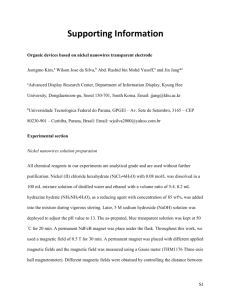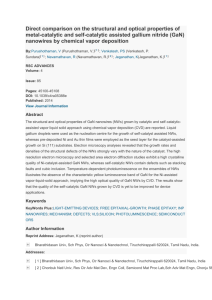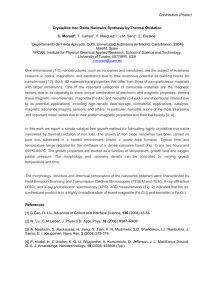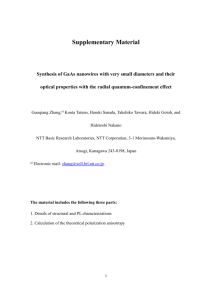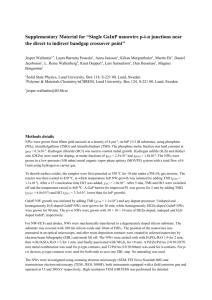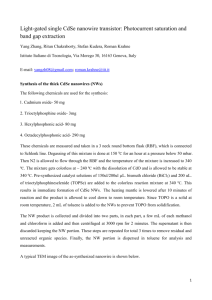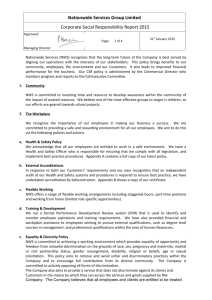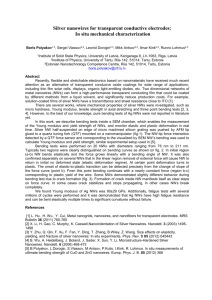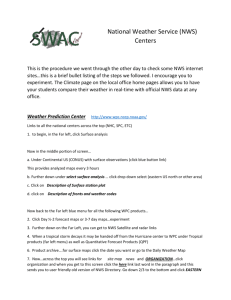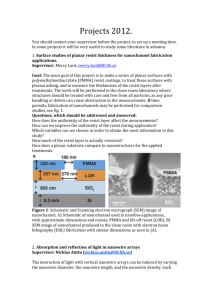Nanowire Phase Change Electronic Memory
advertisement
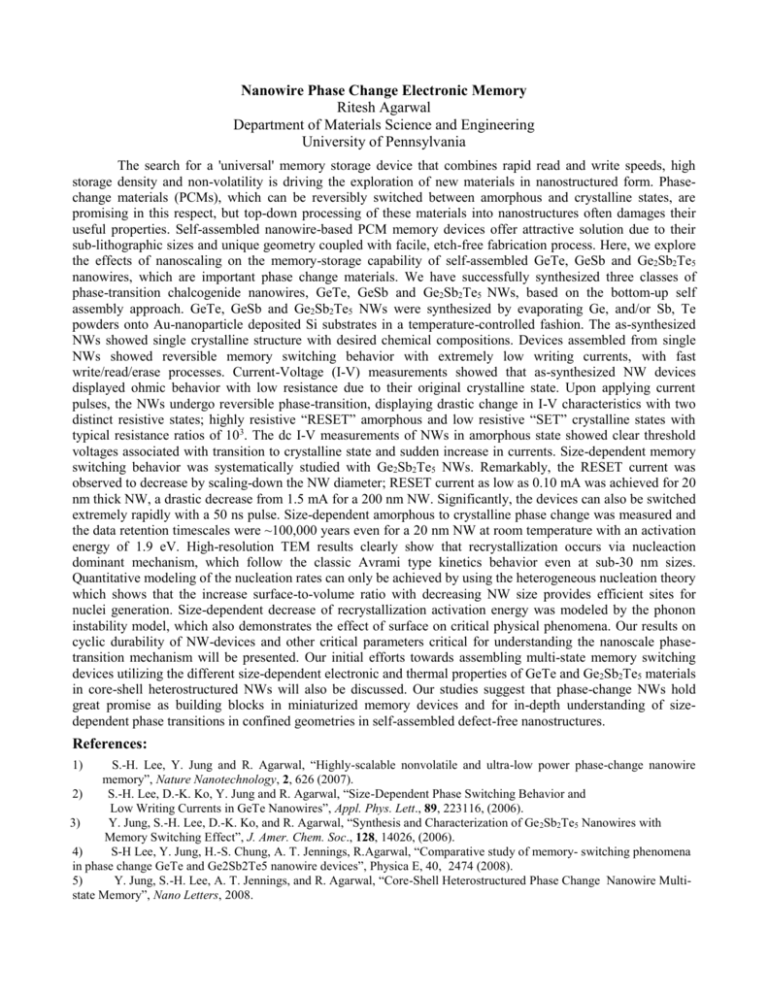
Nanowire Phase Change Electronic Memory Ritesh Agarwal Department of Materials Science and Engineering University of Pennsylvania The search for a 'universal' memory storage device that combines rapid read and write speeds, high storage density and non-volatility is driving the exploration of new materials in nanostructured form. Phasechange materials (PCMs), which can be reversibly switched between amorphous and crystalline states, are promising in this respect, but top-down processing of these materials into nanostructures often damages their useful properties. Self-assembled nanowire-based PCM memory devices offer attractive solution due to their sub-lithographic sizes and unique geometry coupled with facile, etch-free fabrication process. Here, we explore the effects of nanoscaling on the memory-storage capability of self-assembled GeTe, GeSb and Ge2Sb2Te5 nanowires, which are important phase change materials. We have successfully synthesized three classes of phase-transition chalcogenide nanowires, GeTe, GeSb and Ge2Sb2Te5 NWs, based on the bottom-up self assembly approach. GeTe, GeSb and Ge2Sb2Te5 NWs were synthesized by evaporating Ge, and/or Sb, Te powders onto Au-nanoparticle deposited Si substrates in a temperature-controlled fashion. The as-synthesized NWs showed single crystalline structure with desired chemical compositions. Devices assembled from single NWs showed reversible memory switching behavior with extremely low writing currents, with fast write/read/erase processes. Current-Voltage (I-V) measurements showed that as-synthesized NW devices displayed ohmic behavior with low resistance due to their original crystalline state. Upon applying current pulses, the NWs undergo reversible phase-transition, displaying drastic change in I-V characteristics with two distinct resistive states; highly resistive “RESET” amorphous and low resistive “SET” crystalline states with typical resistance ratios of 103. The dc I-V measurements of NWs in amorphous state showed clear threshold voltages associated with transition to crystalline state and sudden increase in currents. Size-dependent memory switching behavior was systematically studied with Ge2Sb2Te5 NWs. Remarkably, the RESET current was observed to decrease by scaling-down the NW diameter; RESET current as low as 0.10 mA was achieved for 20 nm thick NW, a drastic decrease from 1.5 mA for a 200 nm NW. Significantly, the devices can also be switched extremely rapidly with a 50 ns pulse. Size-dependent amorphous to crystalline phase change was measured and the data retention timescales were ~100,000 years even for a 20 nm NW at room temperature with an activation energy of 1.9 eV. High-resolution TEM results clearly show that recrystallization occurs via nucleaction dominant mechanism, which follow the classic Avrami type kinetics behavior even at sub-30 nm sizes. Quantitative modeling of the nucleation rates can only be achieved by using the heterogeneous nucleation theory which shows that the increase surface-to-volume ratio with decreasing NW size provides efficient sites for nuclei generation. Size-dependent decrease of recrystallization activation energy was modeled by the phonon instability model, which also demonstrates the effect of surface on critical physical phenomena. Our results on cyclic durability of NW-devices and other critical parameters critical for understanding the nanoscale phasetransition mechanism will be presented. Our initial efforts towards assembling multi-state memory switching devices utilizing the different size-dependent electronic and thermal properties of GeTe and Ge2Sb2Te5 materials in core-shell heterostructured NWs will also be discussed. Our studies suggest that phase-change NWs hold great promise as building blocks in miniaturized memory devices and for in-depth understanding of sizedependent phase transitions in confined geometries in self-assembled defect-free nanostructures. References: S.-H. Lee, Y. Jung and R. Agarwal, “Highly-scalable nonvolatile and ultra-low power phase-change nanowire memory”, Nature Nanotechnology, 2, 626 (2007). 2) S.-H. Lee, D.-K. Ko, Y. Jung and R. Agarwal, “Size-Dependent Phase Switching Behavior and Low Writing Currents in GeTe Nanowires”, Appl. Phys. Lett., 89, 223116, (2006). 3) Y. Jung, S.-H. Lee, D.-K. Ko, and R. Agarwal, “Synthesis and Characterization of Ge 2Sb2Te5 Nanowires with Memory Switching Effect”, J. Amer. Chem. Soc., 128, 14026, (2006). 4) S-H Lee, Y. Jung, H.-S. Chung, A. T. Jennings, R.Agarwal, “Comparative study of memory- switching phenomena in phase change GeTe and Ge2Sb2Te5 nanowire devices”, Physica E, 40, 2474 (2008). 5) Y. Jung, S.-H. Lee, A. T. Jennings, and R. Agarwal, “Core-Shell Heterostructured Phase Change Nanowire Multistate Memory”, Nano Letters, 2008. 1)

